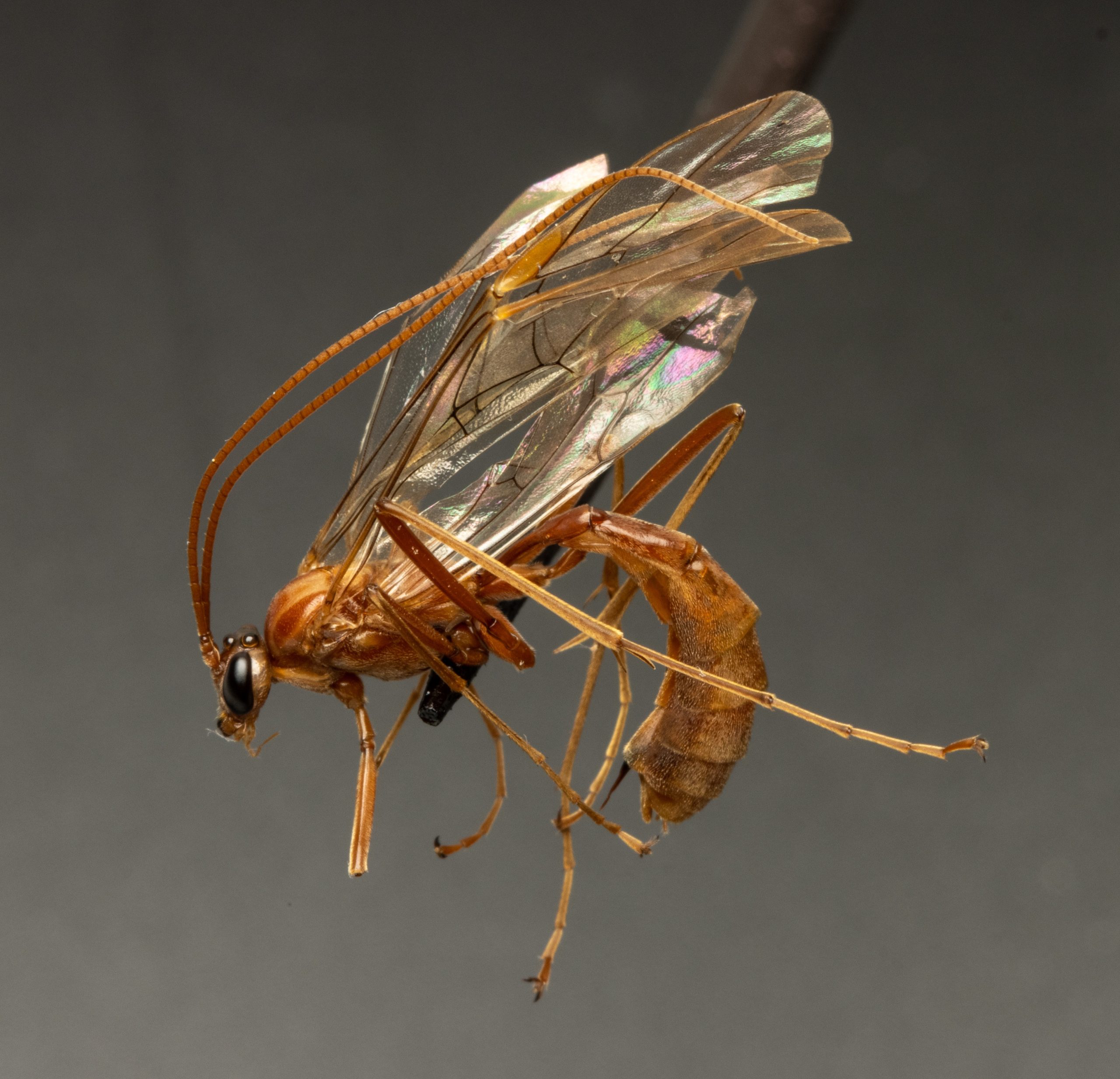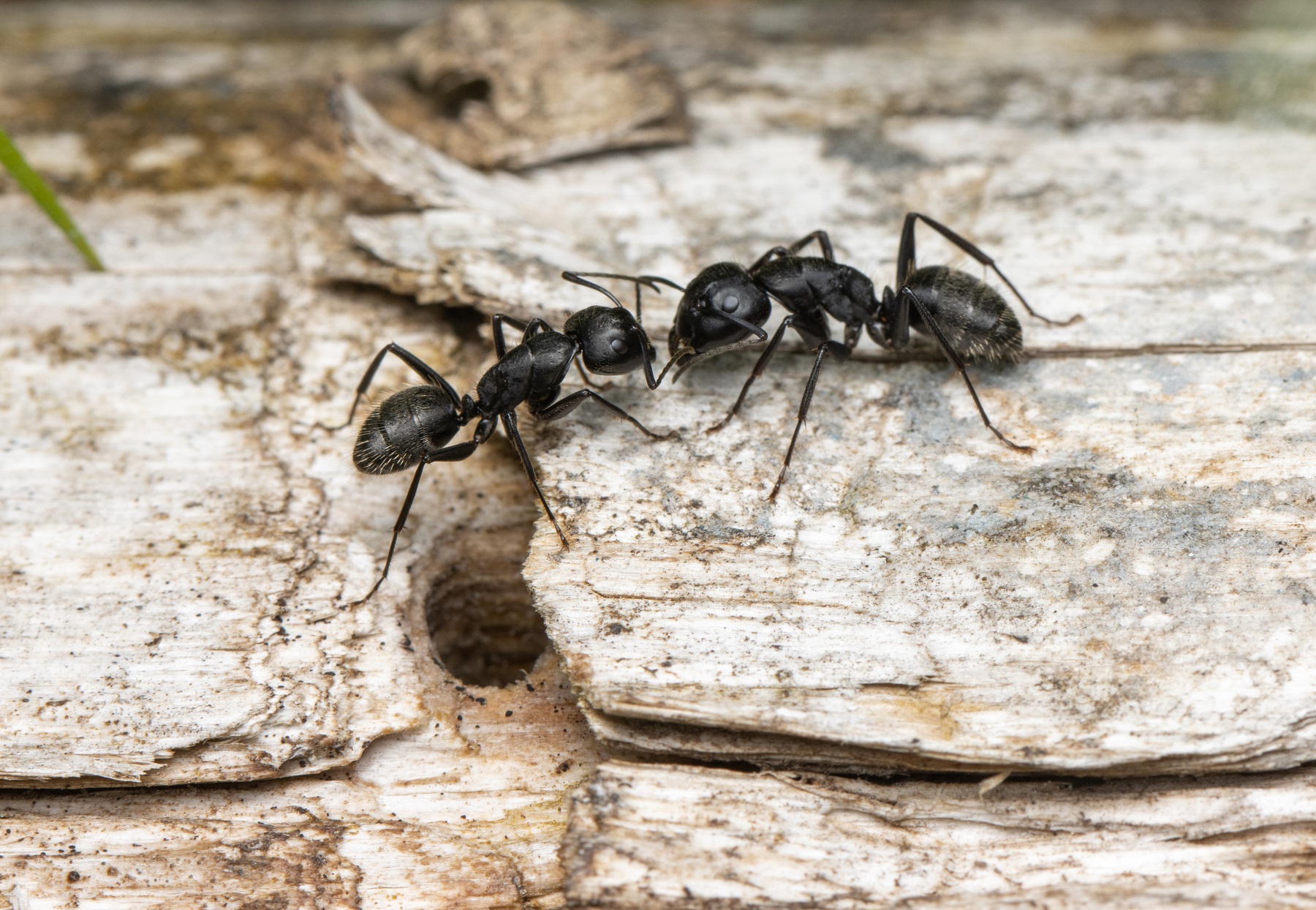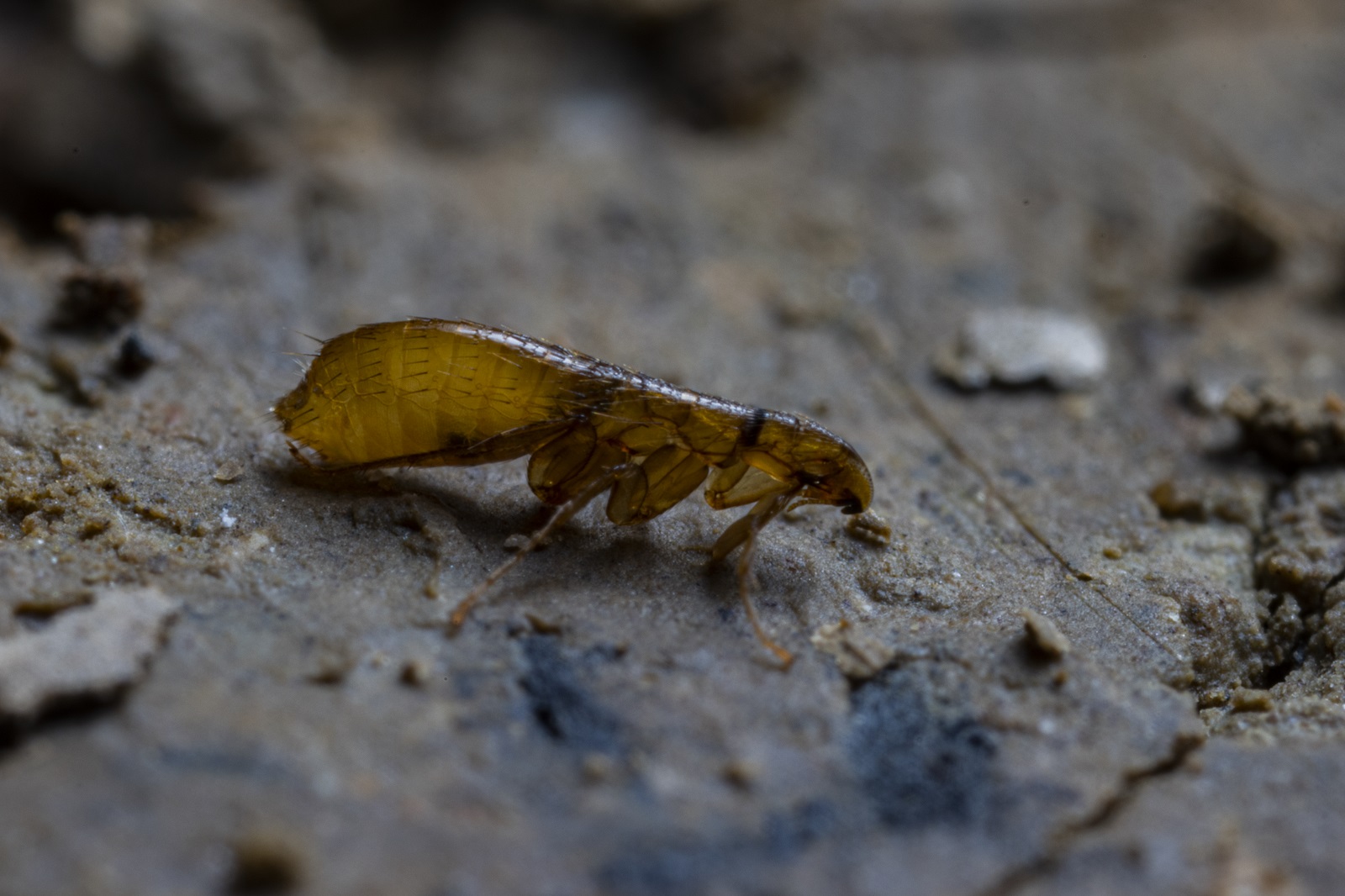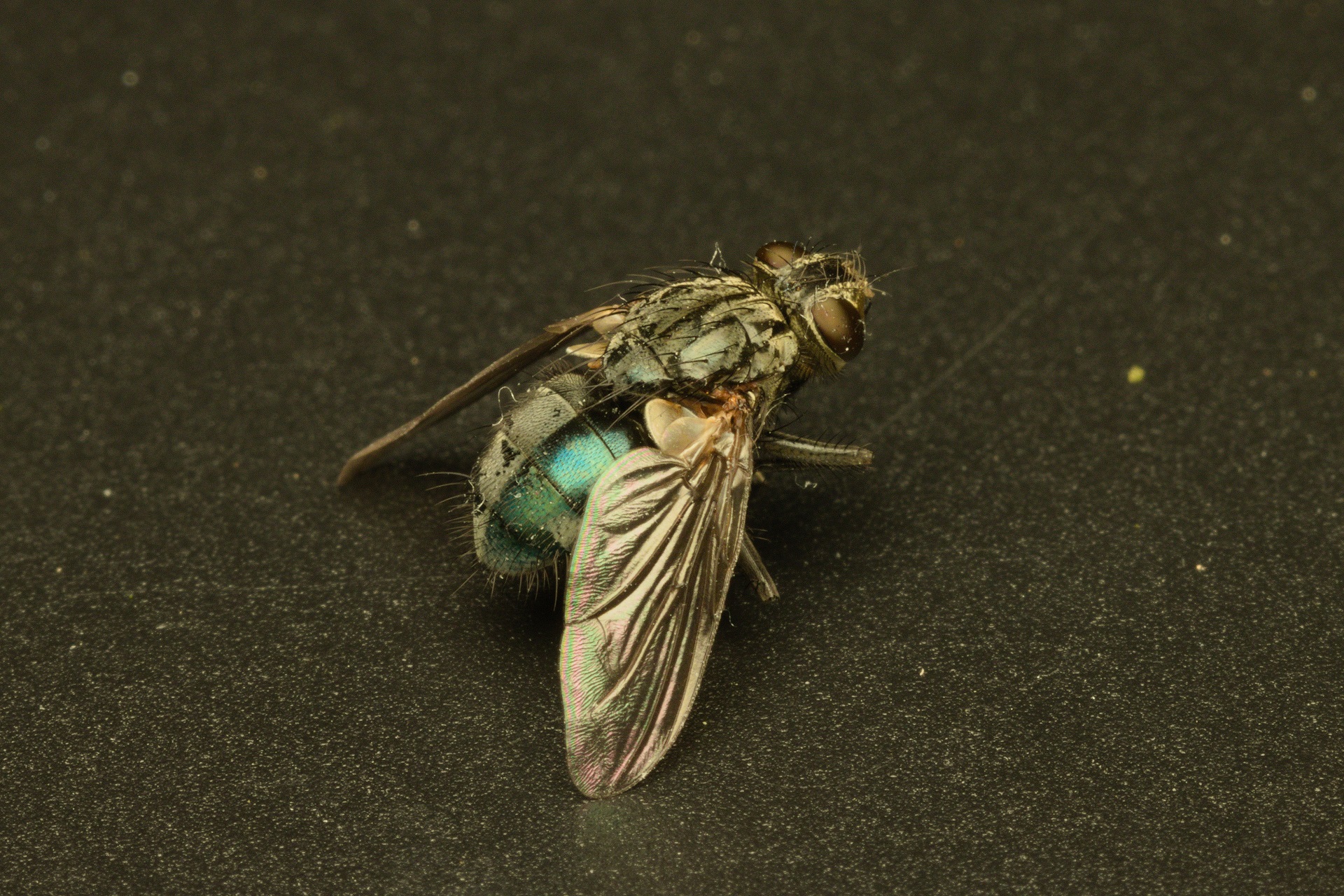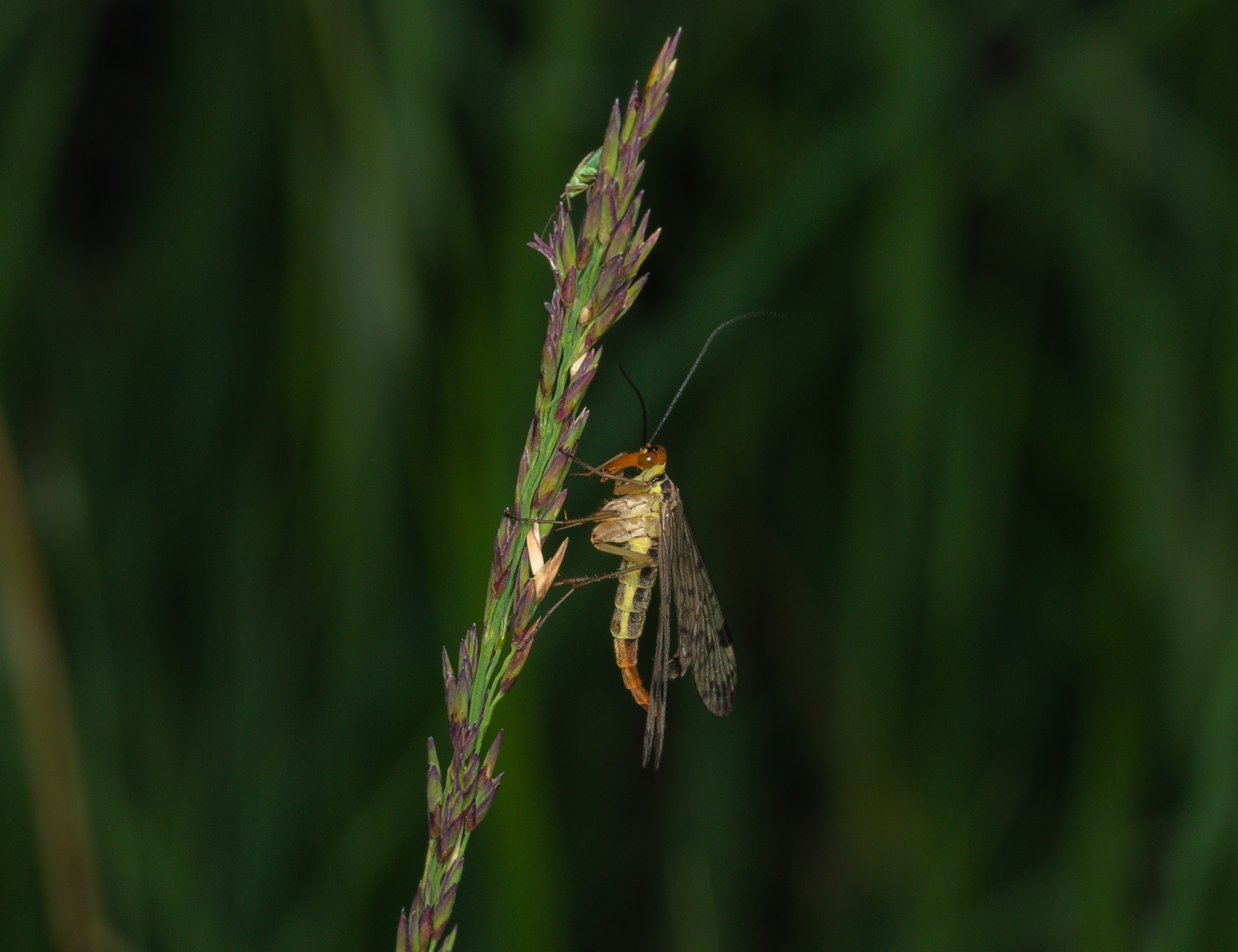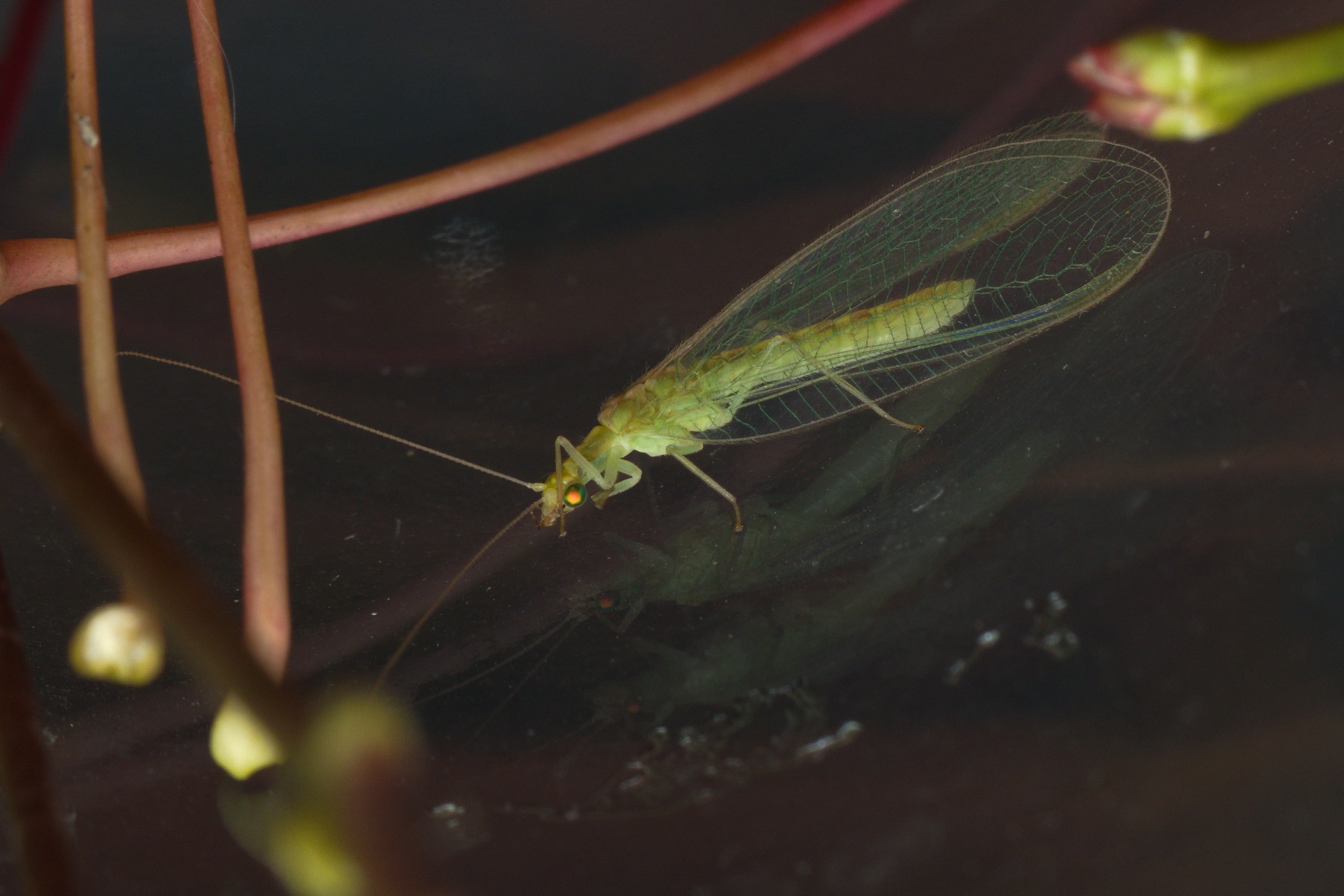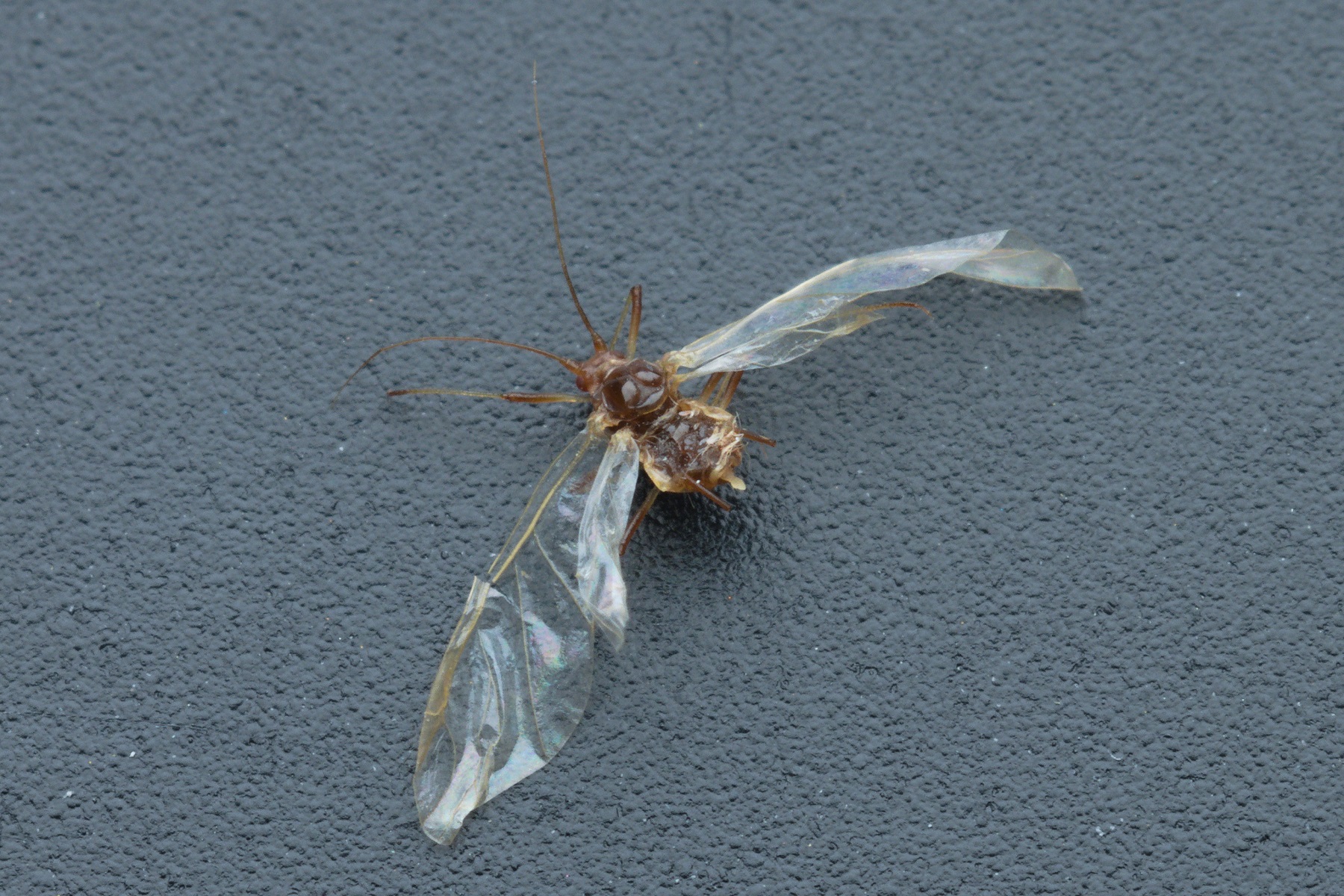Collembola
Description
Springtails are tiny, primarily wingless hexapods whose size rarely exceeds a few millimetres. Their body consists of a head (cephalon), thorax, and abdomen. The head has short antennae with up to six segments, individual ommatidia, and often ocelli (simple eyes). The mouthparts, modified for the piercing-sucking or chewing, are hidden within the head capsule. The thorax consists of three body segments (pro-, meso-, and metathorax), each bearing a pair of legs that end with claws. The abdomen is composed of six segments. The first segment has a ventral tubus (collophore), which is believed to function in moisture uptake. The third and fourth abdominal segments house the jumping apparatus, consisting of a retinaculum on the third segment and a furca or furcula (a tail-like propulsion organ or ‘spring tail’) on the fourth. The furca, originally composed of three parts, splits into a forked structure. The fifth abdominal segment is genital, and the sixth anal.
Biology
Springtails are cosmopolites that inhabit humid habitats. They are most commonly found in leaf litter and soil, under bark, and in moss, but they also inhabit caves, water surfaces, and even bird nests. Ecologically, they are important decomposers, while some surface-dwelling species are considered pests. Globally, springtails are a poorly studied group, and their species count is likely to be significantly underestimated.
Springtails are best known for their escape mechanism. They hook their furcula into the retinaculum and tense their abdomen like a spring. When threatened, they release the retinaculum, causing the furcula to strike a substrate, propelling the springtail into the air. During escape, they cannot control the flight direction, which depends on the angle of the substrate. The longest recorded jump reached 30 cm.
Springtails exhibit exceptional diversity in shape and colour. Although all share the same basic body plan, the proportions between the thorax, abdomen, antennae, and legs vary greatly. In some, the head points forward, while in others it is directed downwards. The body can be elongated, or the thoracic and abdominal segments may fuse into a spherical unit. Individual structures reflect species’ ecology: species gliding on the water surface have long claws, whereas inhabitants of deep soil tend to have partially or completely reduced jumping apparatus.
Mating is accompanied by courtship dances. Male’s sperm packets (spermatophores) deposited on the floor are picked up by a female. Some species reproduce asexually, from unfertilized eggs (parthenogenesis). Eggs are laid in clusters of about ten, and in some species, the parents remain near the eggs to protect them from fungal growth.
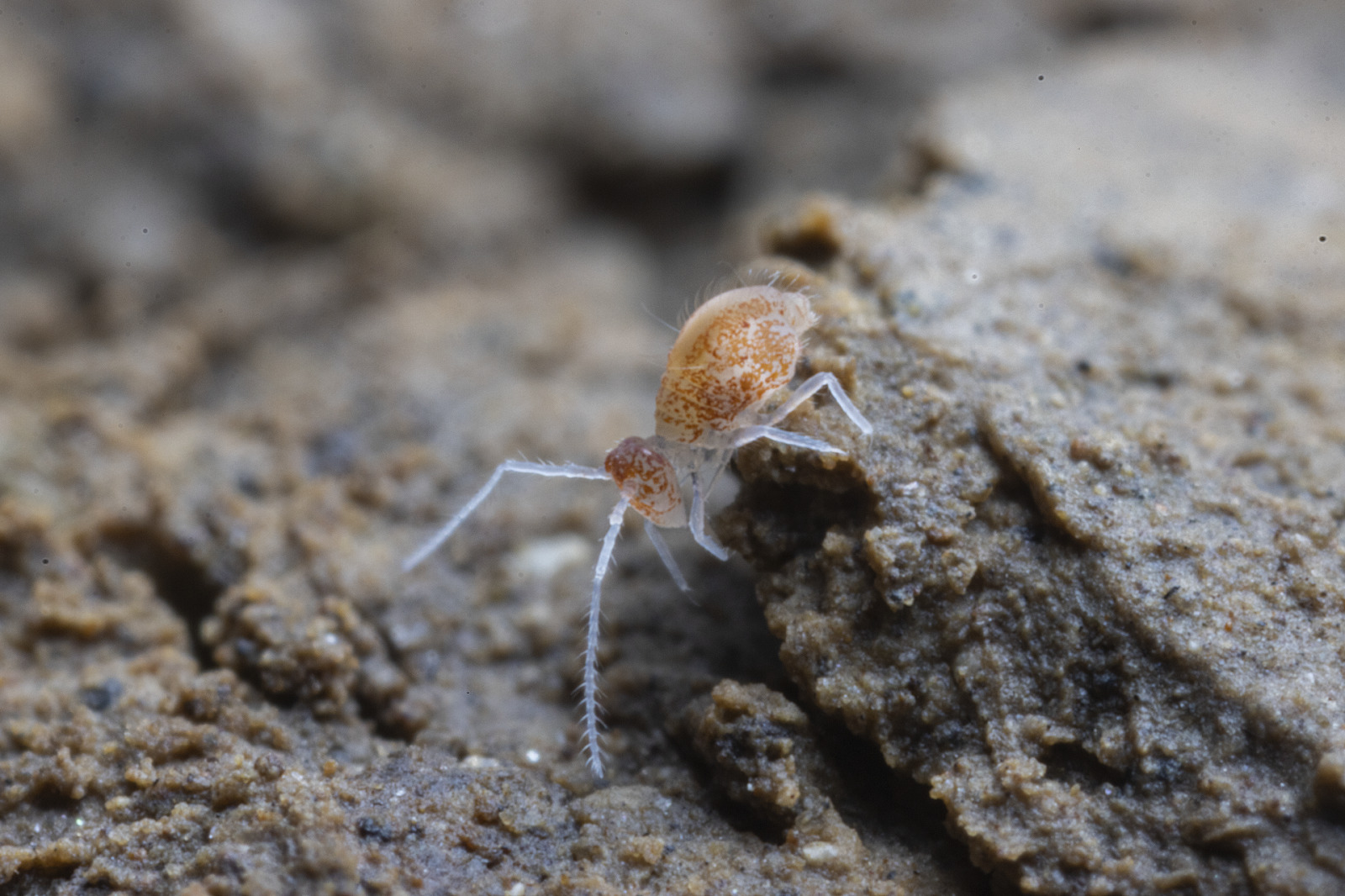
Sorodni členonožci

Authors
- Urban Bogataj,
- Gregor Bračko,
- Teo Delič,
- Cene Fišer,
- Žiga Fišer,
- Rok Kostanjšek,
- Rudi Verovnik,
- Miloš Vittori,
- Valerija Zakšek.
Students Vito Ham, Vesna Jurjevič, Gaj Kušar, and Adrijan Samuel Stell Pičman also participated in the project.
